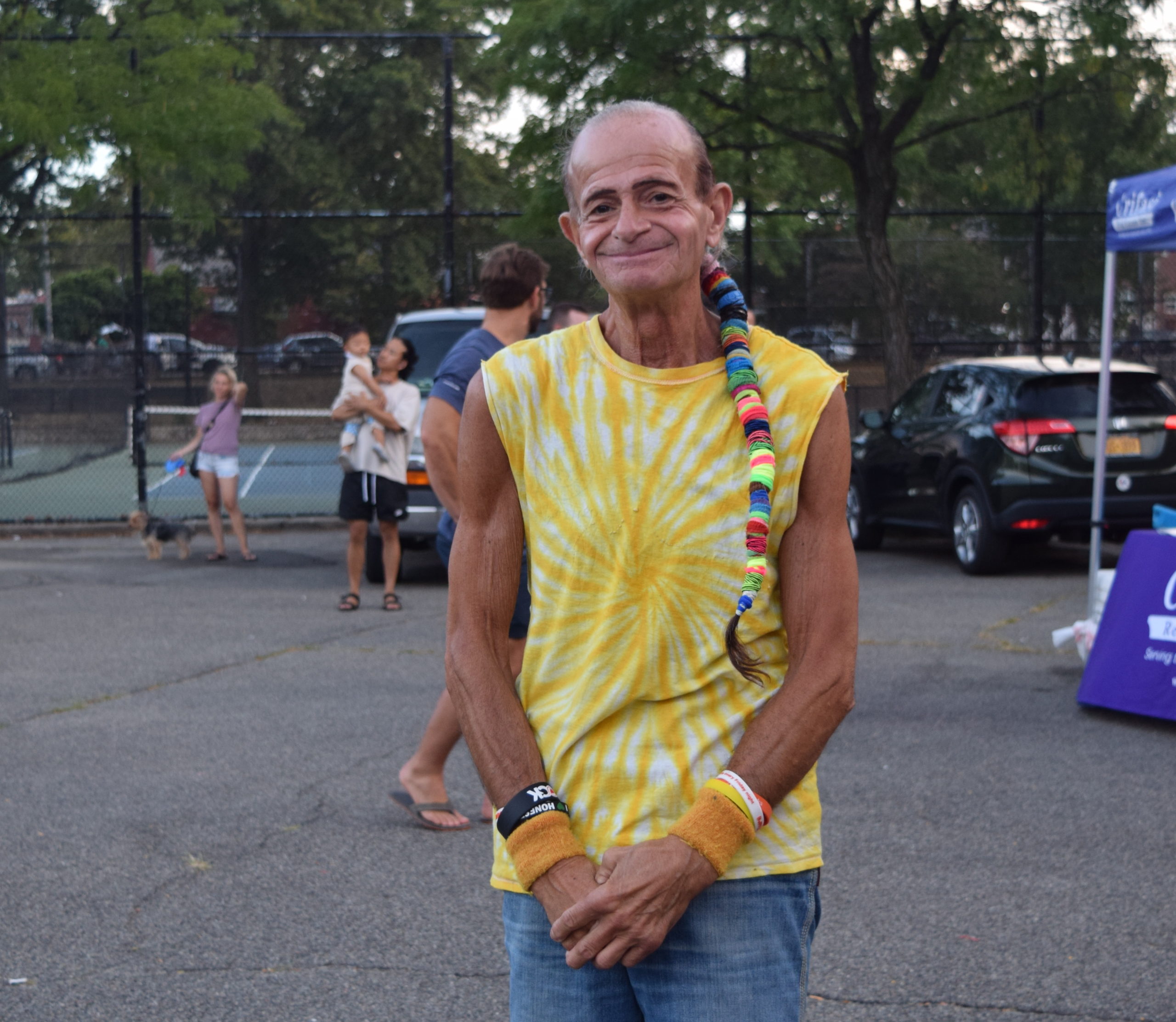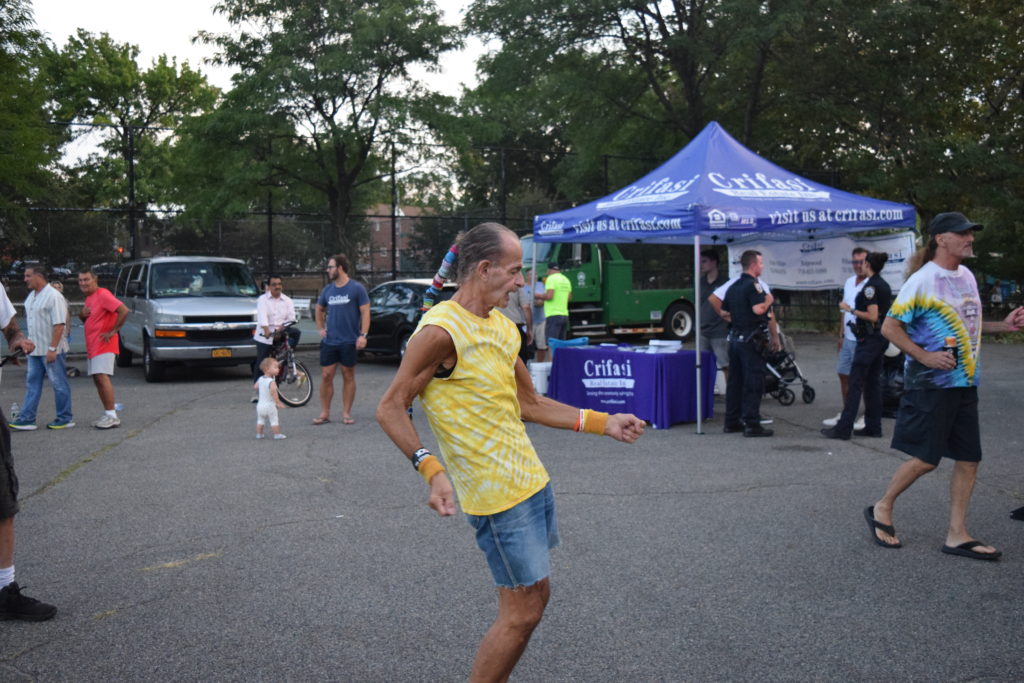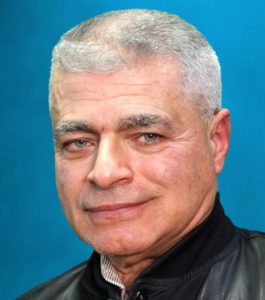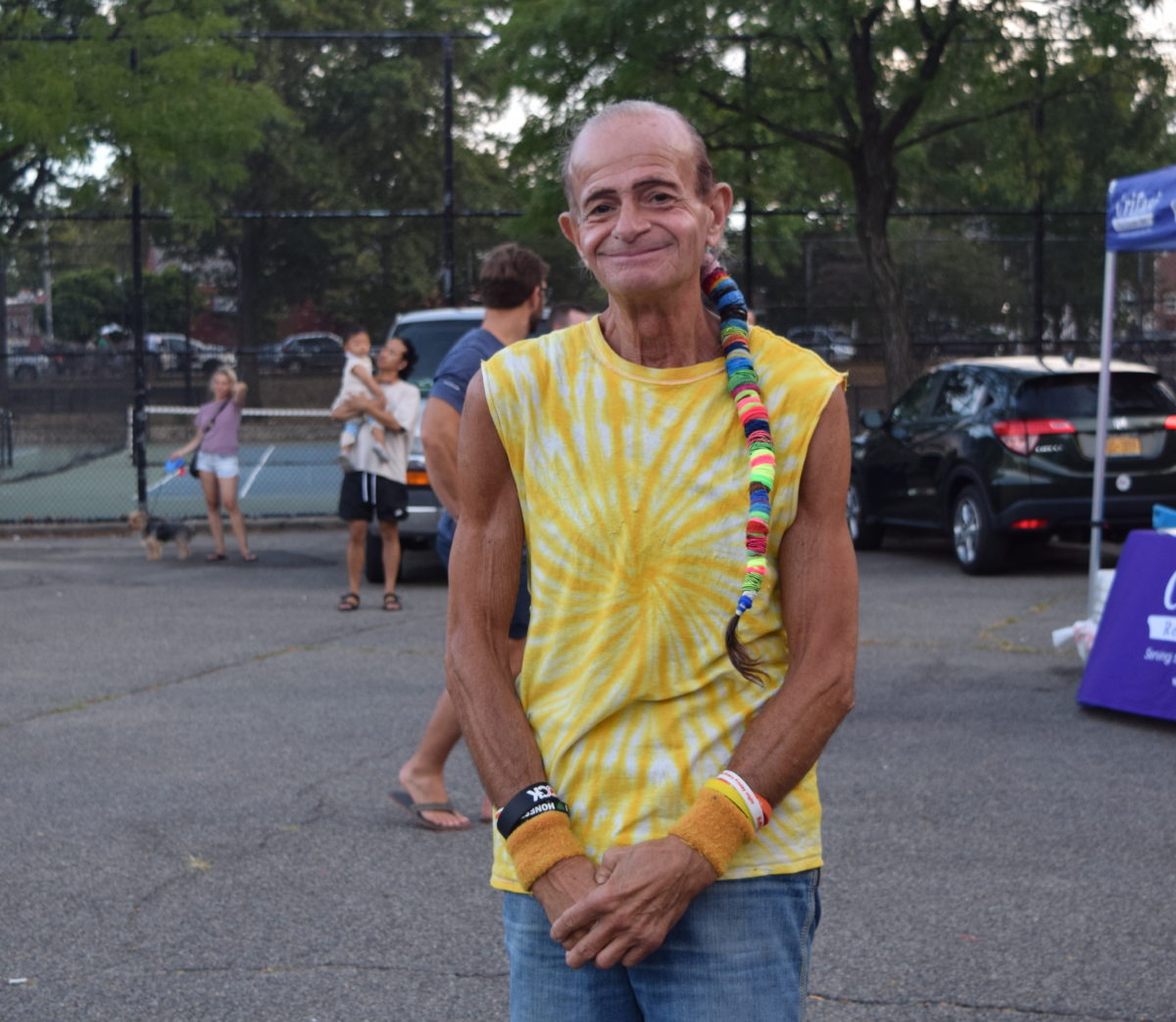By Jessica Meditz
jmeditz@queensledger.com

Joe ‘the Dancer’ Ferrante of Flushing attends nearly every community concert or event.
If you live in the area and have attended a free, local concert or parade, chances are you’ve seen Joe Ferrante in action.
Ferrante, 72, who calls himself “Joe the Dancer,” has an appearance you just can’t miss: usually sporting a bright yellow muscle tee and denim shorts along with his long ponytail adorned with colorful hair ties from start to finish.
He can be spotted easily at the front of any public event that has music, truly dancing like nobody’s watching.
A resident of Flushing since 1958, Ferrante travels across the five boroughs and Long Island to attend free concerts.
In true New Yorker fashion, Ferrante does not drive, and uses his own two feet and a MetroCard to get around — with the occasional ride from his many friends.
“I started gathering information about free things to do in New York and found out about all the parks, like Eisenhower Park and Bryant Park,” he said. “I said to myself, ‘Why would people pay when there’s so much free stuff to do in New York?’”
“Now I have people that have computers and send me print outs sometimes or they call me. I keep my ears open,” Ferrante continued. “Every single day I find new things to do.”
One of Ferrante’s personal goals is to attend as many free events as he can.
Before the pandemic wreaked havoc, he attended 321 free events in 2019. This year, he’s already up to 165 events.
Although Ferrante has never taken formal dance lessons, he has been freestyling his moves at shows for as long as he can remember. He also learns from watching other people dance.
A die-hard fan of the Rolling Stones and Bruce Springsteen & The E Street Band, Ferrante lived through the time where Motown and doo-wop classics were big, as well as the golden era of classic rock.
In fact, he attended Woodstock in 1969 while he worked for the U.S. Postal Service as a mail carrier.
“Festivals were a new thing at the time and nobody knew what was going on. That was the first time I did acid, which I did for three days, and I still was good to go to work on Monday,” Ferrante said.
“I didn’t see every band that was there, and there was a lot of stuff going on…you wandered around, you went to the lake,” he continued. “I remember Santana, The Who, Jefferson Airplane, Joe Cocker and Ten Years After. It was excellent.”
Ferrante attended Woodstock a month before he was drafted to the Army.
He served in Texas from 1969 to 1971, and feels “lucky” that he wasn’t sent straight to Vietnam, like many men were at the time.
“I lucked out because I took typing in high school and went into a company which had over 90 percent college graduates. I got hired because I knew how to type and they said they were losing the guy from New York, so they got another guy from New York,” Ferrante said. “My job was in Congressionals, and I was a fact finder. I would find information about what really happened…you really could hardly help anybody, but once in a while, you actually got to help someone out.”
After he came back from serving in the Army, Ferrante continued to attend concerts and other places where he could dance, such as the Dr. Pepper Music Festival in Central Park, clubs during the disco frenzy and at various locations in the Hamptons, where he and his friends would rent houses for cheap.

Ferrante busting a move in Juniper Valley Park at a concert featuring band Half Step.
Today, his moves range from one best described as the fish swim, where he puts his arms together and swirls them around as if he’s swimming, to skipping around the front of the stage.
“I love to skip because it’s so much fun. I think I started doing the skip a few years ago,” Ferrante said. “It makes you feel young. When you’re standing in one spot and you skip around, you get more refreshed because you’re in a brand new spot.”
Ferrante said that many people have come up to him over the years at shows to compliment his routine and even join him while he dances.
His signature look, along with his moves, symbolize his free-spirited personality.
Ferrante has not had a haircut in about 15 years, and underneath all the rainbow scrunchies on his ponytail is his own hair. He’s been sporting the look for around eight years.
“It was just so dark and dreary, I had to add some color to it,” he said.
Although he’s probably one of the most positive people in the borough, Ferrante didn’t always have the best outlook on life.
In the past, he suffered from alcoholism and drug addiction, and is now almost 20 years sober.
When Ferrante first became sober in 2005, doctors discovered he had esophageal cancer.
He also experienced cirrhosis of the liver as a result of drinking, which left him unable to walk for quite some time.
“I had to use a walker to walk, and eventually graduated to a cane. Now look at me. I’m 16 years cancer-free,” Ferrante said.
He added that after he got sober, he was in a 10-year slump, but eventually realized he had to turn himself around.
“My whole life, I always felt like I should have died many times, and God has given me something to do,” Ferrante said. “He must want me to inspire people.”
As an Italian-American, Ferrante’s Catholic faith is important to him and brings him peace, along with his own spiritual readings and meditation.
He has been retired for the last 19 years and is very happy to live a blissful life with no cell phone or computer.
As he gets closer to his 73rd birthday in October, Ferrante encourages younger folks to be more optimistic and see the good in their day-to-day lives, as you never know when your last day will be.
“When I go to sleep at night, I ask myself ‘Did I do the best I could today?’ And 95 percent of the time, the answer is yes,” he said.
He went on to debunk the typical “glass half empty or glass half full” question that’s supposed to determine if someone is an optimist or a pessimist.
“The glass is always full,” Ferrante explained. “Even if it’s only half filled with liquid, the other half is still filled with oxygen. So it’s always full.”














